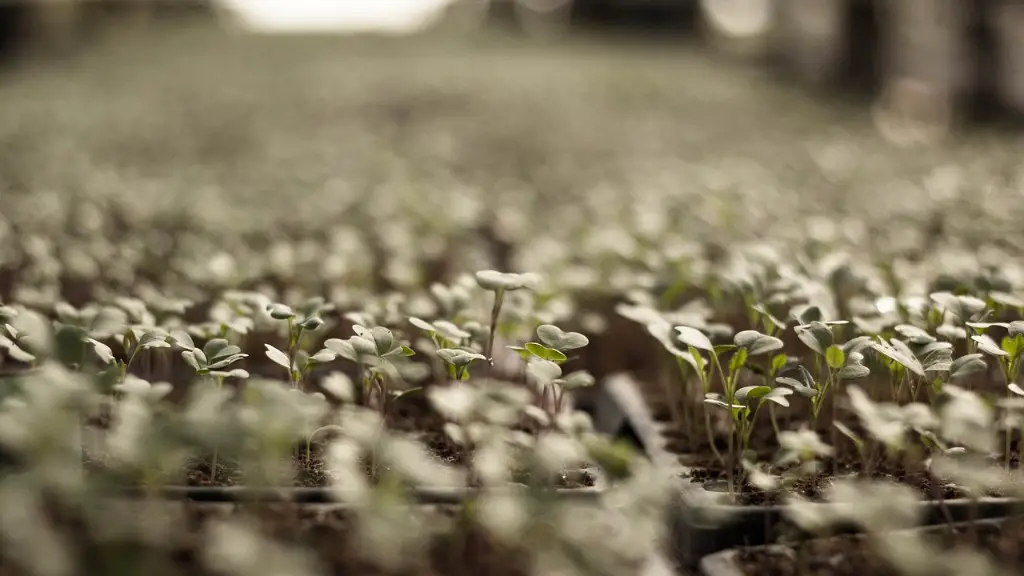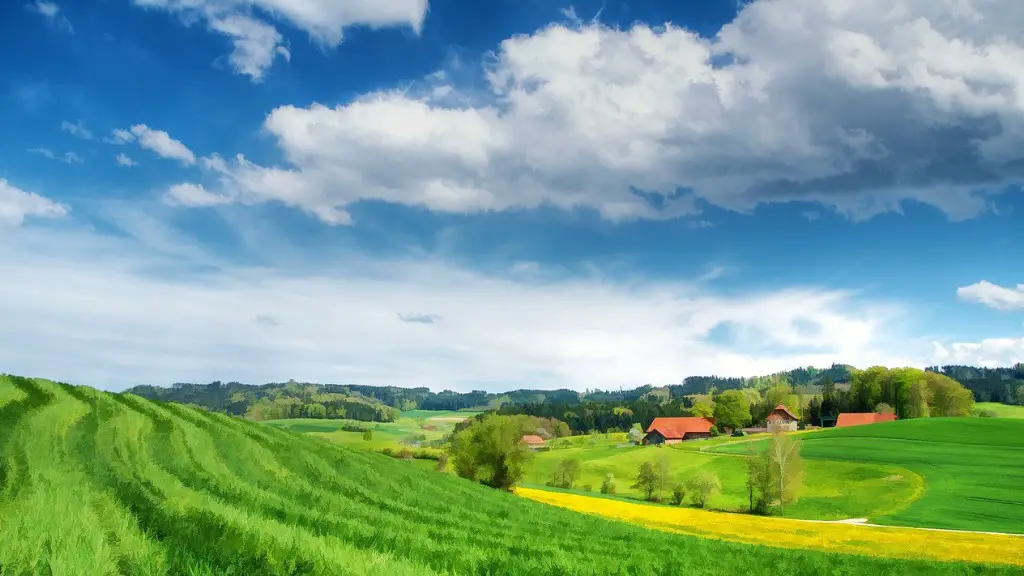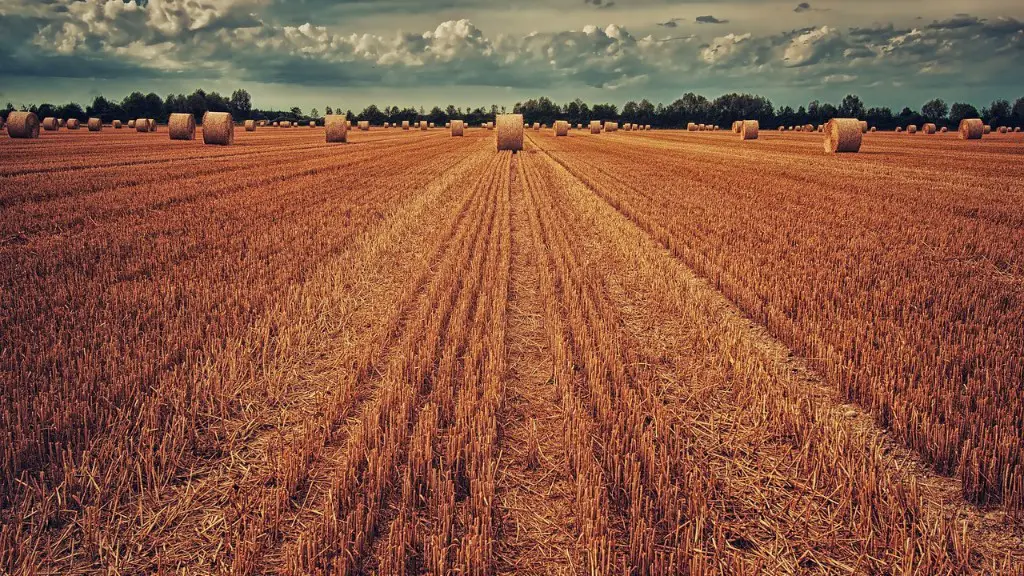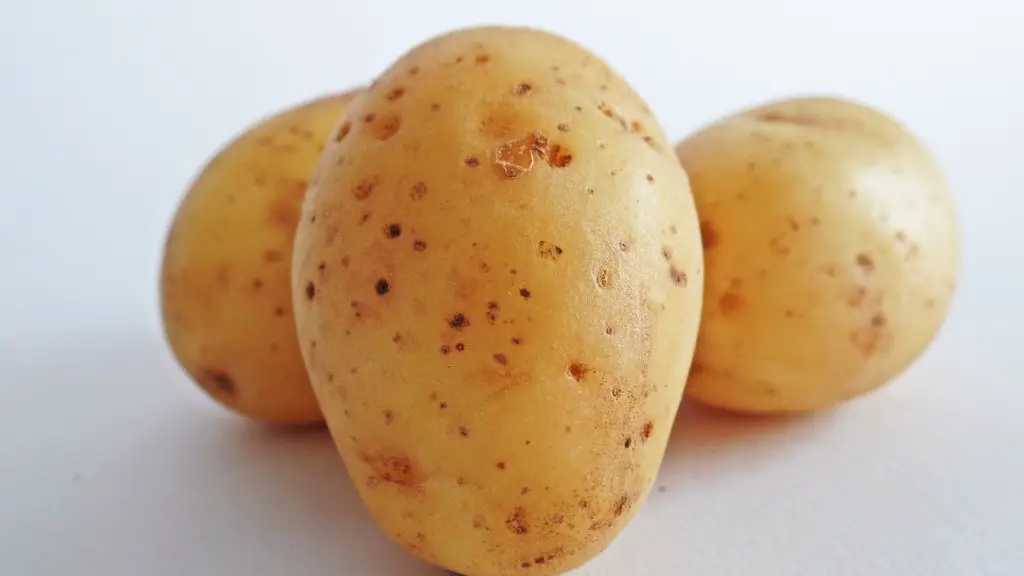The dawn of agriculture was a time when humans began to cultivate and farm plants for food. This started around 10,000 BCE in the Fertile Crescent region of the Middle East. Agriculture allowed for the domestication of plants and animals, which led to the development of civilizations. The use of irrigation and new technologies helped agriculture spread to other parts of the world.
The dawn of agriculture is typically considered to be the moment when humans began to actively manage their own food production, through activities like planting and harvesting crops. This began to happen around 10,000 years ago, in different parts of the world.
When did the agricultural era start?
The Neolithic Revolution was a period of time when humans began to transition from a hunter-gatherer lifestyle to a more settled, agricultural way of life. This transition took place over the course of several thousand years and was a gradual process. The Neolithic Revolution is thought to have begun around 12,000 years ago, and it coincided with the end of the last ice age and the beginning of the current geological epoch, the Holocene. The Neolithic Revolution was a major turning point in human history and has had a profound impact on the way we live today.
The Agricultural Revolution was a period of unprecedented increase in agricultural production in Britain between the mid-17th and late 19th centuries. This increase in production was due to a number of factors, including the introduction of new technologies and husbandry practices, the enclosure of common land, and the increase in demand for food due to the growing population. The Agricultural Revolution had a profound impact on British society, transforming the economy and resulting in a dramatic increase in the standard of living.
What is the timeline of agriculture
The Neolithic Revolution was a period of time when various new technologies and innovations allowed for the domestication of plants and animals, as well as the development of new agricultural techniques. This period of time began around 7000 BC in Mehrgarh, Pakistan, and saw the cultivation of wheat, sesame, barley, and eggplant. Around the same time, cattle and chicken were domesticated in Mehrgarh, and by 6800 BC rice had been domesticated in southeast Asia. Evidence of cattle domestication has also been found in Turkey, dating back to 6500 BC. This period of time was crucial in the development of human civilization, and led to the growth of cities and the rise of civilizations.
The Egyptians were among the first peoples to practice agriculture on a large scale, starting in the pre-dynastic period from the end of the Paleolithic into the Neolithic, between around 10,000 BC and 4000 BC. This allowed them to settle in one place and develop a complex society. The Egyptian civilization lasted for over 3000 years, and was one of the most powerful and influential empires of the ancient world.
What are the 3 main agricultural revolutions?
The Agricultural Revolution was a period of time when humans began to transition from a hunter-gatherer lifestyle to one where they began to settle down and farm. This transition occurred in different parts of the world at different times, but there are three major agricultural revolutions that are generally agreed upon by historians.
The first agricultural revolution began around 10,000 BC and saw humans begin to settle down in one place and cultivate crops. This allowed for the domestication of plants and animals, which led to a more stable food supply and the development of civilizations.
The second agricultural revolution began in the 18th century and saw the rise of commercial agriculture. This was a period of intense technological innovation that saw the development of new methods of farming, such as the use of fertilizers and irrigation. This period also saw the rise of the industrial food system, which led to mass production and distribution of food.
The third agricultural revolution began in the 1970s and is still ongoing. This period has seen the rise of biotechnology and the use of genetically modified organisms in agriculture. This has led to increased yields and the development of new crops that are resistant to pests and diseases.
There is some debate as to whether or not we are currently in the midst of a
The scholars spilt up the stone age into Paleolithic period (old stone age), Neolithic age (New stone age) and Mesolithic age (Middle stone age) Each of three ages, saw distinct improvements.
What was the 1st Agricultural Revolution?
The term “Neolithic Revolution” was coined in 1923 by V. Gordon Childe to describe the first in a series of agricultural revolutions in Middle Eastern history. Childe identified these revolutions as a crucial step in the rise of civilization, arguing that the availability of food surpluses allowed for the development of more densely populated settlements, the domestication of plants and animals, and the eventual development of writing and other technologies.
The Neolithic Revolution had a profound impact on the human way of life, introducing new methods of agriculture and domestication that would eventually spread around the world. It also led to the rise of civilizations in the Middle East and Asia, and laid the groundwork for the eventual development of modern industrial societies.
The increase in production of basic commodities was due to the increase in population as well as the industrialization of the country. The increase in population led to an increase in demand for these commodities, while the industrialization led to an increase in production. This led to a increase in the prices of these commodities.
What caused the Agricultural Revolution
There are several possible factors which contributed to the agricultural revolution. There isn’t just one exact reason. One key factor was probably climate change. Advances in tool making and the domestication of animals also played a role. These factors likely allowed early humans to adapt to a changing environment and become more successful at food production.
The Neolithic period in India was a time of great change and innovation in the way that people lived and worked. One of the most important developments was the introduction of agro-pastoralism, which involved the cultivation of crops and the raising of livestock. This new way of life led to the development of new technologies, such as the plough and the use of granaries, and the growth of settlements like Mehrgarh.
Where did agriculture begin?
The Fertile Crescent was home to some of the earliest farmers in the world. The region, which includes modern-day Iraq, Jordan, Syria, Israel, Palestine, southeastern Turkey and western Iran, was fertile and supported a large population. The people of the Fertile Crescent grew crops and raised livestock, making the region one of the most productive in the world. Today, the Fertile Crescent is still an important agricultural region, and its people have continued to innovate and adapt to changing conditions.
The cultivation of crops in America begins in the Tehuacan valley, southeast of the present-day Mexico City. Squash and chili are the earliest plants to be grown – soon followed by corn (or maize) and then by beans and gourds. The cultivation of these crops allowed the early inhabitants of the Americas to settle in one place and develop civilizations.
What is the oldest crop
For over 13 000 years, lentils have helped shaped the course of human history Today, we add lentils to tasty stews, soups and salads In ancient times, however, lentils were an important part of establishing modern societies.
Lentils are a type of legume that is native to central Asia and the Middle East. They were one of the first crops to be domesticated, and they quickly became a staple food in the diets of many cultures.
Lentils are an excellent source of protein, fiber, and other nutrients. They are also very versatile and can be used in a variety of dishes.
Ancient civilizations such as the Egyptians, Greeks, and Romans all relied on lentils as a major part of their diet. In fact, lentils were so important to the Roman Empire that they were used as currency!
Today, lentils are still enjoyed by people all over the world. They are a cheap, nutritious, and delicious food that is perfect for any meal.
Norman Ernest Borlaug is considered by many to be the father of modern agriculture. He developed new strains of wheat and other crops that were more resistant to disease and pests, and he helped to introduce these crops to third world countries. As a result of his work, millions of people were able to escape poverty and hunger. He was awarded the Nobel Peace Prize in 1970 in recognition of his contributions to peace and human welfare.
Who were the first farmers in the world?
Agriculture began in the Fertile Crescent more than 11,000 years ago. DNA samples from ancient farmers reveal their relationship to present day humans. The first farmers made an enormous genetic contribution to diverse European, Asian, and African populations.
Mesopotamia is a region in the modern-day Middle East. It is considered to be the birthplace of the “First Agricultural Revolution,” or the “Neolithic Revolution.” This occurred roughly 10,000 years ago. Mesopotamia was a fertile area with ample rainfall and ample sunlight. The soil was also quite fertile, due to the presence of the Tigris and Euphrates rivers. The combination of all these factors made Mesopotamia an ideal place for the first agricultural revolution to take place.
What are the 4 types of agriculture
There are four main types of agriculture: livestock production, crop production, agricultural economics, and agricultural engineering. Each type of agriculture has its own set of unique challenges and opportunities.
The Neolithic Revolution was a huge turning point in human history, marking the transition from a Hunter-Gatherer lifestyle to one of settled agriculture. This change allowed for the development of civilizations and the growth of cities. The Neolithic Revolution began around 10,000 BC in the Fertile Crescent, a boomerang-shaped region of the Middle East where humans first took up farming. Shortly after, Stone Age humans in other parts of the world also began to practice agriculture. This new way of life had a profound impact on human societies and the way we live today.
Final Words
The dawn of agriculture began around 10,000 BC with the domestication of plants and animals. This allowed for the growth of civilizations and the development of technology and culture.
There is no precise answer to this question as it is believed that agriculture first began to develop independently in different parts of the world at different times. However, it is generally agreed that the dawn of agriculture was a major turning point in human history and that it had a profound impact on the development of civilizations.





